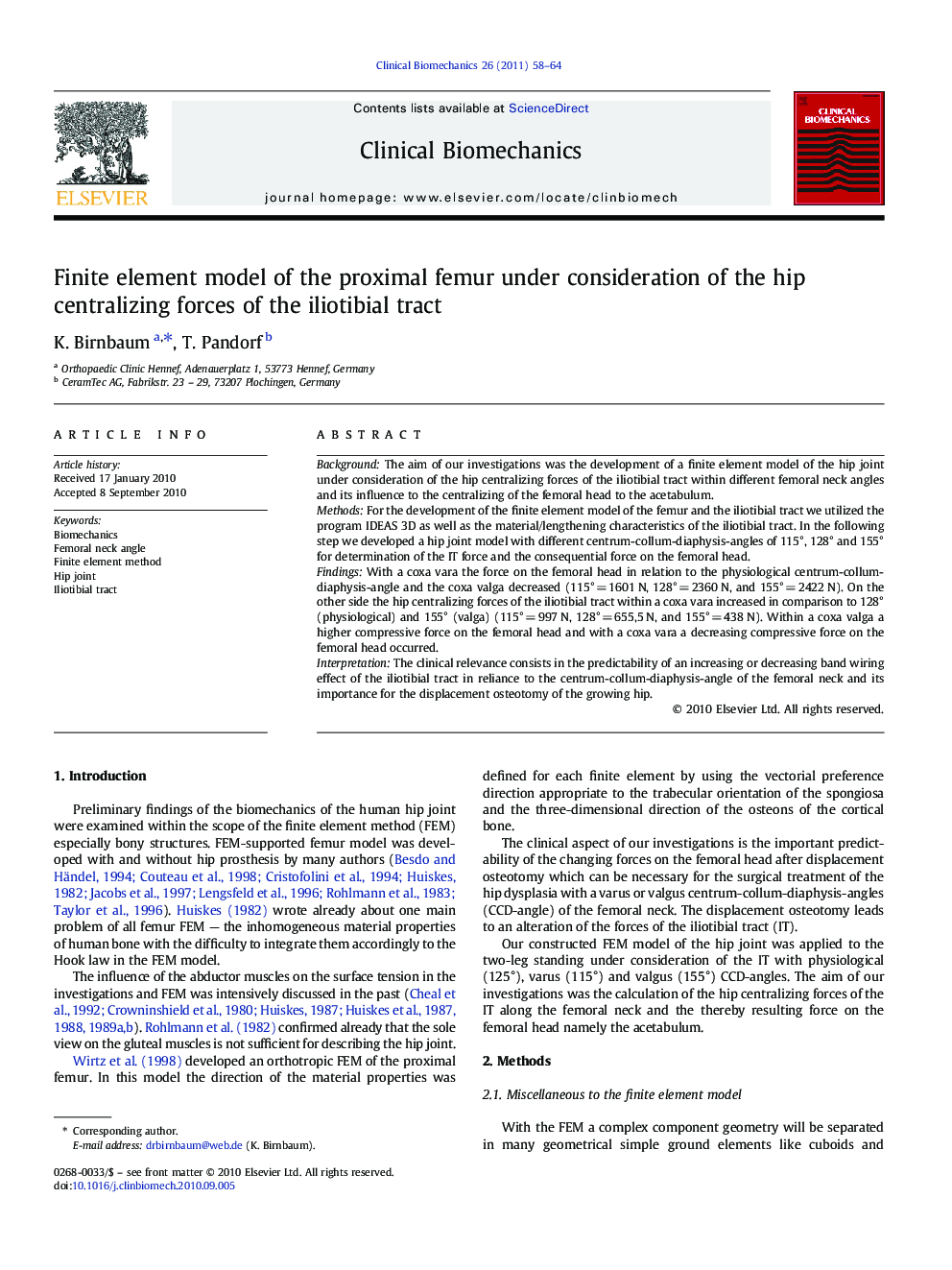| Article ID | Journal | Published Year | Pages | File Type |
|---|---|---|---|---|
| 4051006 | Clinical Biomechanics | 2011 | 7 Pages |
BackgroundThe aim of our investigations was the development of a finite element model of the hip joint under consideration of the hip centralizing forces of the iliotibial tract within different femoral neck angles and its influence to the centralizing of the femoral head to the acetabulum.MethodsFor the development of the finite element model of the femur and the iliotibial tract we utilized the program IDEAS 3D as well as the material/lengthening characteristics of the iliotibial tract. In the following step we developed a hip joint model with different centrum-collum-diaphysis-angles of 115°, 128° and 155° for determination of the IT force and the consequential force on the femoral head.FindingsWith a coxa vara the force on the femoral head in relation to the physiological centrum-collum-diaphysis-angle and the coxa valga decreased (115° = 1601 N, 128° = 2360 N, and 155° = 2422 N). On the other side the hip centralizing forces of the iliotibial tract within a coxa vara increased in comparison to 128° (physiological) and 155° (valga) (115° = 997 N, 128° = 655,5 N, and 155° = 438 N). Within a coxa valga a higher compressive force on the femoral head and with a coxa vara a decreasing compressive force on the femoral head occurred.InterpretationThe clinical relevance consists in the predictability of an increasing or decreasing band wiring effect of the iliotibial tract in reliance to the centrum-collum-diaphysis-angle of the femoral neck and its importance for the displacement osteotomy of the growing hip.
